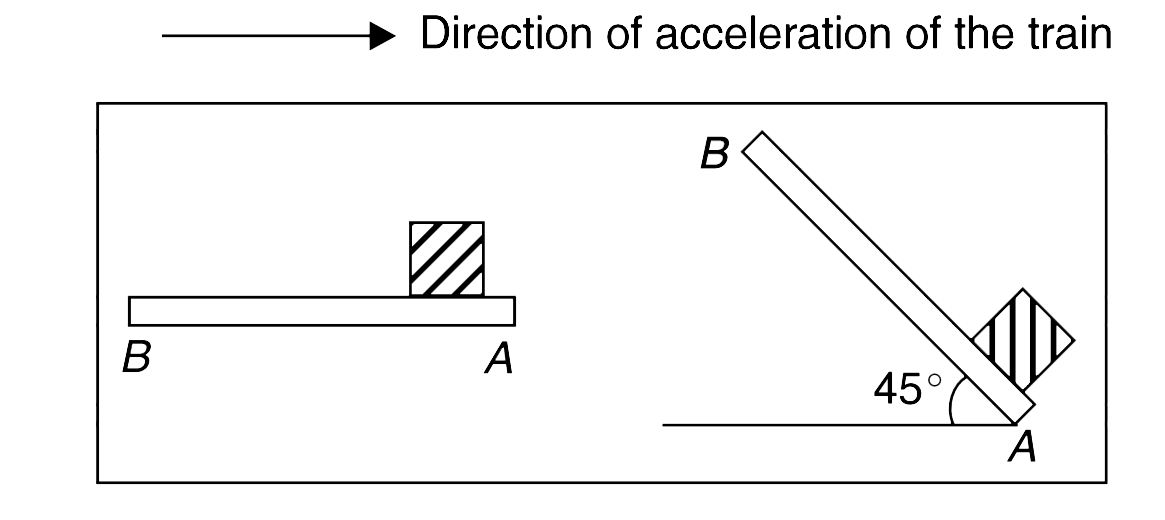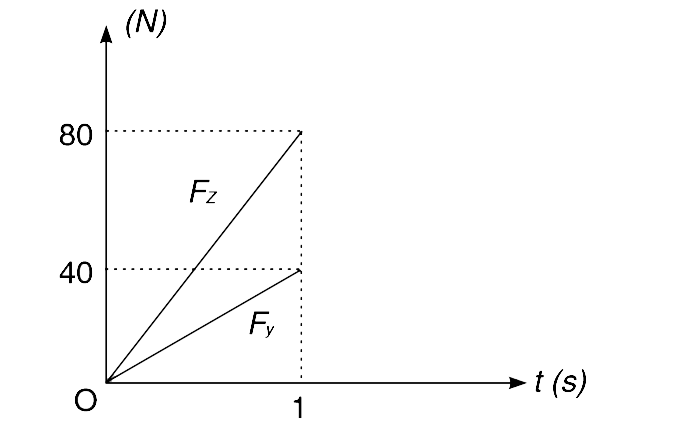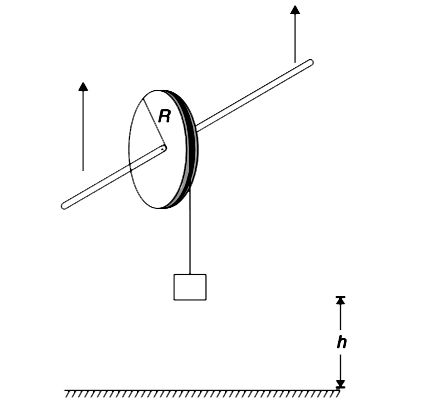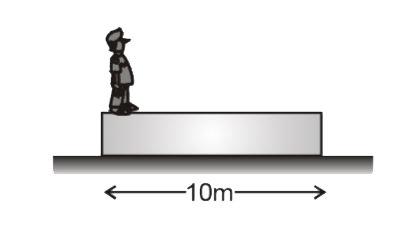An experimenter is inside a uniformly accelerated train. Train is moving horizontally with constant acceleration a0. He places a wooden plank AB in horizontal position with end A pointing towards the engine of the train. A block is released at end A of the plank and it reaches end B in time t1. The same plank is placed at an inclination of 45∘ to the horizontal. When the block is released at A it now climbs to B in timet2. It was found that t2t1=254. What is the coefficient of friction between the block and the plank?

The correct Answer is:μ=(3a0−4g4a0+3g)
Step by step video, text & image solution for An experimenter is inside a uniformly accelerated train. Train is moving horizontally with constant acceleration a_(0). He places a wooden plank AB in horizontal position with end A pointing towards the engine of the train. A block is released at end A of the plank and it reaches end B in time t_(1). The same plank is placed at an inclination of 45^(@) to the horizontal. When the block is released at A it now climbs to B in timet_(2). It was found that (t_(2))/(t_(1))= 2^((5)/(4)). What is the coefficient of friction between the block and the plank? by Physics experts to help you in doubts & scoring excellent marks in Class 11 exams.
Updated on:21/07/2023Topper's Solved these Questions
Similar Questions
A particle is acted upon by a force for 1 second whose X component remains constant at Fx=30N but y and z components vary with time as shown in the graph. Calculate the magnitude of change in momentum of the particle in 1 s. What angle does the change in momentum (Δ→P) make with X axis ?

View SolutionThe pulley of radius R can rotate freely about its axle as shown in the figure. A thread is tightly wrapped around the pulley and its free end carries a block of mass m. When the block is at a height h above the ground the system is released (i.e., the pulley is made free to rotate & the block is allowed to fall) and at the same instant the axle is moved up keeping it horizontal all the time. When the block hits the floor the axle has gone up by a distance 2h. Find the angle by which the pulley must have rotated by this time.

View SolutionA plank of mass 2 kg and length 1 m is placed on horizontal floor.A small block of mass 1 kg is placed on top of the plank , at its right extreme end .The coefficient of friction between plank and floor is 0.5 and that between plank and block is 0.2 . If a horizontal force = 30 N starts acting on the plank to the right ,the time after which the block will fall off the plank is (g = 10 ms^(-2))
View SolutionA wooden plank of mass 20kg is resting on a smooth horizontal floor. A man of mass 60kg starts moving from one end of the plank to the other end. The length of the plank is 10m . Find the displacement of the plank over the floor when the man reaches the other end of the plank.
View SolutionA block of mass m is kept on a rough plank which moves with a horizontal acceleration a. If the plank was at rest at t=0 , and the block does not slide relative to the plank, find the work done by friction on the (a) block, (b) plane, (c) system, (block+plank) during time t .
View SolutionA block of mass m is placed in equilibrium on a moving plank. The maximum horizontal acceleration of the plank for mu=0.2 is:
View SolutionA block of mass m=2kg of shown dimensions is placed on a plank of mass M = 6Kg which is placed on smooth horizontal plane. The coefficient of friction between the block and the plank is mu=1/3 . If a horizontal froce F is applied on the plank, then find the maximum value of F (in N) for which the block and the plank move together
View SolutionA block of mass 2 kg rests on a rough horizontal plank , the coefficient of friction between the plank and block is 0.3. If the plank is pulled horizontally with a constant acceleration of 4m/s2 , the distance moved by the block on the plank in 5 second starting from rest (in m) is : (Take g = 10m/s2)
View SolutionA wooden plank of mass 20 kg is resting on a smooth horizontal floor. A man of mass 60 kg starts moving from one end of the plank to the other end. The length of the plank is 10 m. Find the displacement of the plank over the floor when the man reaches the other end of the plank.

View SolutionOn the horizontal surface of plank a block of mass 1 kg is placed (μ=0.6) which is stationary w.r.t. plank. Plank is moving with acceleration 5m/s2, then the frictional force on the block will be
View SolutionM द्रव्यमान का एक व्यक्ति L लम्बाई के एक ल्पांक के एक सिरे पर खड़ा है (क्षैतिज अवस्था में) व्यक्ति, प्लांक के दूसरे सिरे की ओर गति करता है। यदि प्लांक का द्रव्मान m/3 है तब तल के सापेक्ष प्लांक कितनी दूरी तय करेगा?
View SolutionA wooden block is kept on a polished wooden plank and the inclination of the plank is gradually increased. It is found that the block starts slipping when the plank makes an angle of 18∘ with the horizontal. However, once started the block can continue with uniform speed if the inclination is reduced to 15∘. Find the coefficients of static and kinetic friction between the block and the plank.
View SolutionA horizontal plank has a rectangular block placed on it. The plank starts oscillating vertically and simple harmonically with an amplitude of 40 cm. the block just loose contact with the plank when the plank is at momentary rest. Then
View SolutionA wooden plank of mass 20 kg is at rest on a smooth horizontal floor. A man of mass 60 kg starts moving from one end of the plank to the other end. The length of the plank is 10 m. Find the displacement of the plank over (he floor when the man reaches the other end of the plank
View SolutionA plank of mass 2kg and length 1m is placed on horizontal floor.A small block of mass 1kg is placed on top of the plank , at its right extreme end .The coefficient of friction between plank and floor is 0.5 and that between plank and block is 0.2 . If a horizontal force =30N starts acting on the plank to the right ,the time after which the block will fall off the plank is (g=10ms−2)
View Solution

